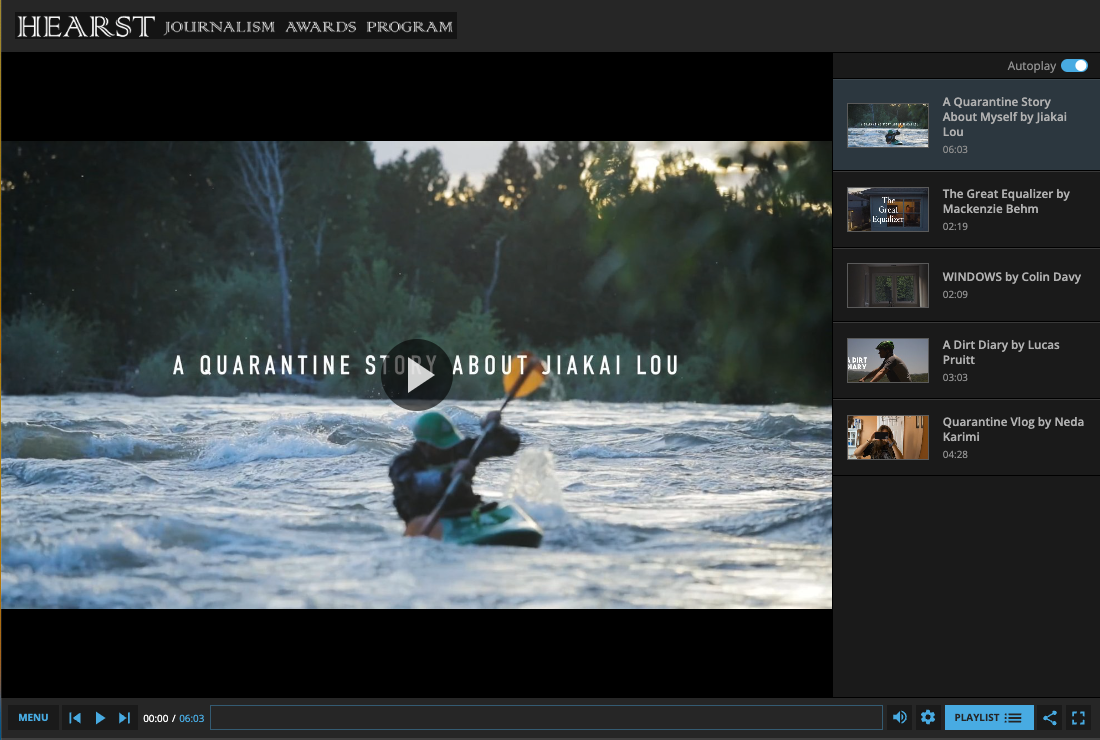For the past three years I have had the honor of serving as a judge for the Hearst Journalism Awards in the multimedia category. The other judges during my tenure included Kenny Irby, Mark Morris, Danese Kenon and Jarrad Henderson.
This year the multimedia finalists were:
- Jiakai Lou, University of Montana
- Mackenzie Behm, University of Florida
- Colin Davy, Syracuse University
- Lucas Pruitt, University of North Carolina at Chapel Hill
- Neda Karimi, Stony Brook University
The films they created blew me away.
The assignment was given to them on Friday, May 29th and they delivered the films below in only one week. The results are both personal and important historical documents. I hope you will take some time to watch them.
About the Hearst Journalism Awards
The Hearst Championships are the culmination of the 2019 – 2020 Journalism Awards Program, which were held in 104 member universities of the Association of Schools of Journalism and Mass Communication with accredited undergraduate journalism programs. From May 29 – June 4, 2020, 29 finalists – winners from the 14 monthly competitions – participated in the 60th annual Hearst Championships.
Due to the Covid-19 pandemic, the in-person Championship planned for Houston, Texas was replaced by a virtual event. Finalists met their judges and received their assignments over video-conference meetings, and then produced and submitted their pieces from home.
Often called “The Pulitzers of college journalism,” the Hearst program holds year-long competitions in writing, photojournalism, radio, television and multimedia for journalism undergraduates.
The William Randolph Hearst Foundation was established by its namesake in 1948 under California non-profit laws, exclusively for educational and charitable purposes. Since then, the Hearst Foundations have contributed over 1 billion dollars to numerous educational programs, health and medical care, human services and the arts in every state.
The Hearst Journalism Awards Program was founded in 1960 to support, encourage and give assistance to journalism education through scholarships for outstanding college students. Since its inception, the program has distributed more than $14 million in scholarships and grants for the exceptional work by student journalists who participate in the program.

